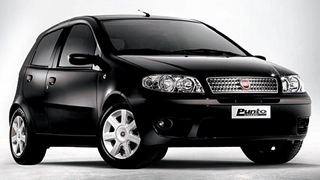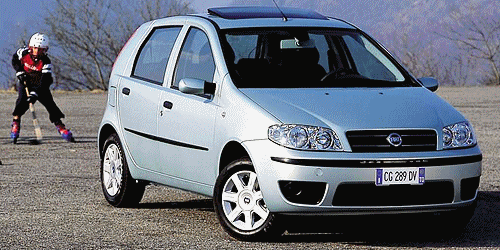Home > Punto > Fiat Punto Classic
Fiat Punto Classic
Posted on Thursday, November 28, 2013 by wallpes
 How many cars have you seen returning to the production lines after being completely discontinued and even already replaced? Now it‘s Fiat‘s time to enlarge what must be a really short list, ressurrecting their famous hatchback in some Western Europe markets. This article will show you that even though this return’s circumstances weren't really supposed to bring impressive news, it‘s always interesting to take a moment for observing how car industry’s standards can change so deeply in relatively short time lapses.
How many cars have you seen returning to the production lines after being completely discontinued and even already replaced? Now it‘s Fiat‘s time to enlarge what must be a really short list, ressurrecting their famous hatchback in some Western Europe markets. This article will show you that even though this return’s circumstances weren't really supposed to bring impressive news, it‘s always interesting to take a moment for observing how car industry’s standards can change so deeply in relatively short time lapses.
This Punto received the “Classic“ badge after seeing the following generation‘s arrival in 2005, which was first called Grande Punto. That was Fiat‘s marketing solution to create some differentiation between the two in order to make it easier for the public to accept both being offered at the same time; since the latter came bigger and much more sophisticated, the older was repositioned as an entry-level compact. As a matter of fact, it wasn't too much hard to see the old Punto as a Classic precisely because of all these big and frequent changes we‘ve seen in the car industry for the last years. After the first phase completing six years, Fiat decided to succeed it with a new generation, rather than dropping the name like with Uno. And just like the previous one, the new Punto received some of Fiat’s 1990s famous design trends but kept them to a minimum, composing a good-looking vehicle without being extravagant – there was an entire structure change, but the most noticeable visual differences were the sleek lights, reminding the Marea family in the front and using a narrower style of the elevated tail lights debuted with the previous Punto. This neutrality must’ve been the reason of this vehicle’s great sales around Europe, along with the large list of trim levels which reached three sporty options.
 That’s why the second generation’s first (and last) facelift came with the announcement of Punto reaching five million produced units so far, in 2003. At that moment Fiat was investing on more neutral styles in order to “ensure” satisfying sales, because the automaker was dealing with a very serious financial crisis. Looking at this hatchback explains why the third one caused such a revolution when arrived: Classic’s design would never succeed if it was released as a new car because although there’s nothing bad-proportioned or weird-looking, it really doesn’t stand in the crowd composed by the latest Citroën C3, Peugeot 208 and specially Seat Ibiza and Renault Clio. Fiat’s old hatchback is now produced at the Serbian plant of Zastava, side-by-side with 500L, offering the Western Europe countries a cheaper option to the minivan. Therefore, since the priority is to keep the costs to a minimum, there won’t be any updates concerning design, equipments or powertrain – the only difference from the former Italian production is that the Serbian plant has a better production process than what Mirafiori and Melfi had at that time, achieving higher quality and safety standards. This plant will also host the North-American 500L’s production and its long-wheelbase option, expected to come as 500XL.
That’s why the second generation’s first (and last) facelift came with the announcement of Punto reaching five million produced units so far, in 2003. At that moment Fiat was investing on more neutral styles in order to “ensure” satisfying sales, because the automaker was dealing with a very serious financial crisis. Looking at this hatchback explains why the third one caused such a revolution when arrived: Classic’s design would never succeed if it was released as a new car because although there’s nothing bad-proportioned or weird-looking, it really doesn’t stand in the crowd composed by the latest Citroën C3, Peugeot 208 and specially Seat Ibiza and Renault Clio. Fiat’s old hatchback is now produced at the Serbian plant of Zastava, side-by-side with 500L, offering the Western Europe countries a cheaper option to the minivan. Therefore, since the priority is to keep the costs to a minimum, there won’t be any updates concerning design, equipments or powertrain – the only difference from the former Italian production is that the Serbian plant has a better production process than what Mirafiori and Melfi had at that time, achieving higher quality and safety standards. This plant will also host the North-American 500L’s production and its long-wheelbase option, expected to come as 500XL.
Category Article diesel, entrada, Fiat, hatchback, mundo, Punto

